 |
 |
 |
| |
Aging in Portugal: The number of PLHIV aged 50+ will double in the next 20 years, representing 80% of the estimated overall prevalence in 2037. The proportion over 70 will increase 4.3 times going from 6% to 26%.
|
| |
| |
"prevalence of ischemic heart disease, hypertension, diabetes, renal failure and osteoporosis is expected to increase by 119%, 60%, 120%, 108% and 158%. The expected increase of anal, vagina/vulva, penis, liver, skin, lung and prostate cancer is 133%, 166%, 140%, 119%, 90%, 135% and 237%"
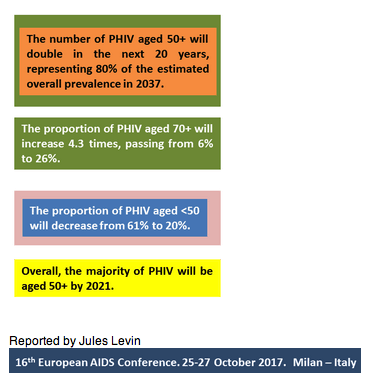
Reported by Jules Levin
Abstract
Objectives: To estimate the consequences over a 20-year horizon of the aging of Portuguese People Living with Human Immunodeficiency Virus (PLHIV) in terms of prevalence of relevant non-oncological comorbidities and incidence of oncological comorbidities.
Methods: Firstly, national sources were used to estimate the prevalence of diagnosed PLHIV by age-group and sex in 2017. Secondly, the prevalence over time was yearly updated considering the expected number of new diagnosed cases and deaths in PLHIV. The incidence and mortality due to HIV in the next 20 years, by age-group and sex, were extrapolated from Portuguese historical data using econometric models. Mortality due to other causes was assumed to be constant over time and equal to the general population. Relative-risks of prevalence and incidence of comorbidities among PLHIV versus non-HIV people was retrieved from international literature. The prevalence of non-oncological and incidence of oncological comorbidities, by age-group and sex, in non-HIV people was estimated using national sources.
Results: The number of PLHIV aged 50+ will double in the next 20 years, representing 80% of the estimated overall prevalence in 2037. The prevalence of non-oncological comorbidities will increase for all the diseases considered.
In particular, prevalence of ischemic heart disease, hypertension, diabetes, renal failure and osteoporosis is expected to increase by 119%, 60%, 120%, 108% and 158%, respectively.
The risk of oncological disease should increase for all cancers, except for non-Hodgkin Lymphoma. The expected increase of anal, vagina/vulva, penis, liver, skin, lung and prostate cancer is 133%, 166%, 140%, 119%, 90%, 135% and 237%, respectively.
Conclusion: The change in PLHIV clinic-demographic profile in Portugal will continue in the next decades, with increasing number of older patients with multiple morbidities, carrying a significant additional burden for the National Health System. Specific disease management programs for this chronically ill people should be discussed and implemented.
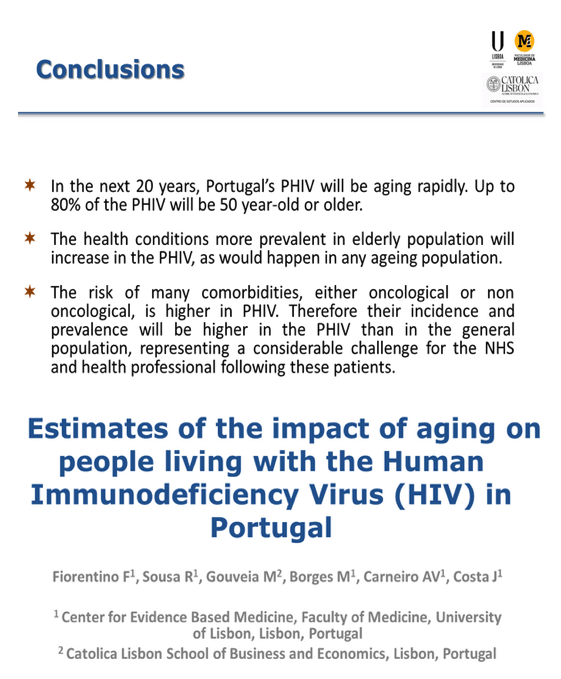
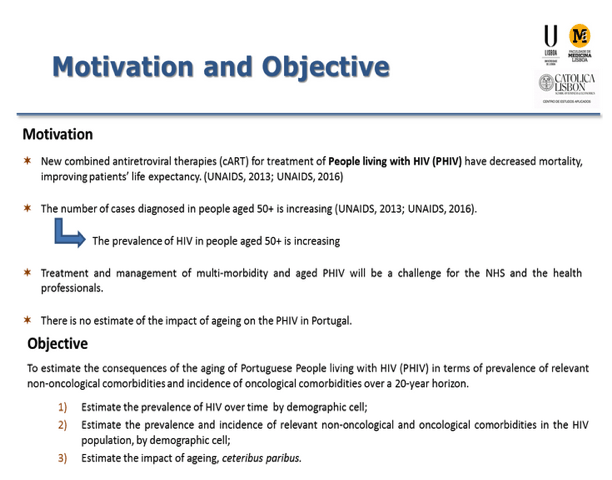
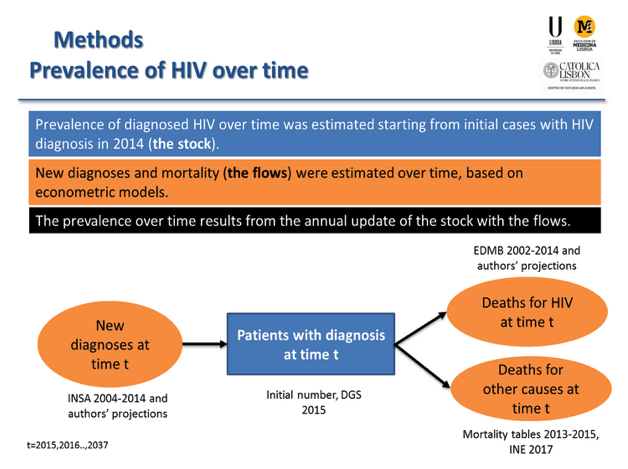
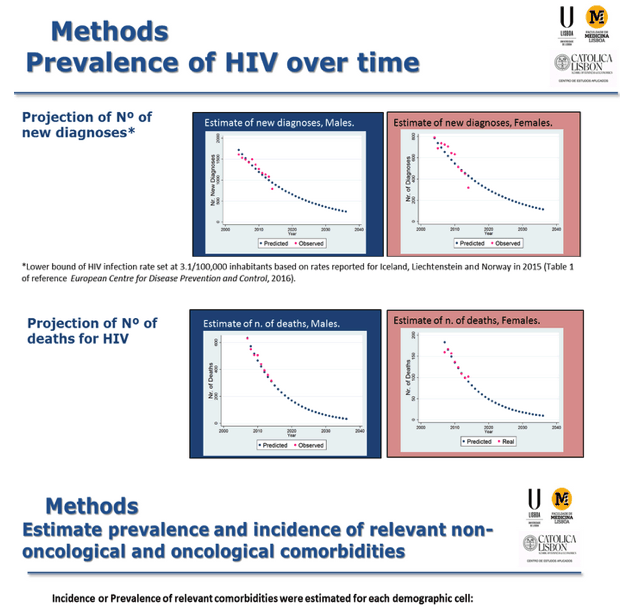
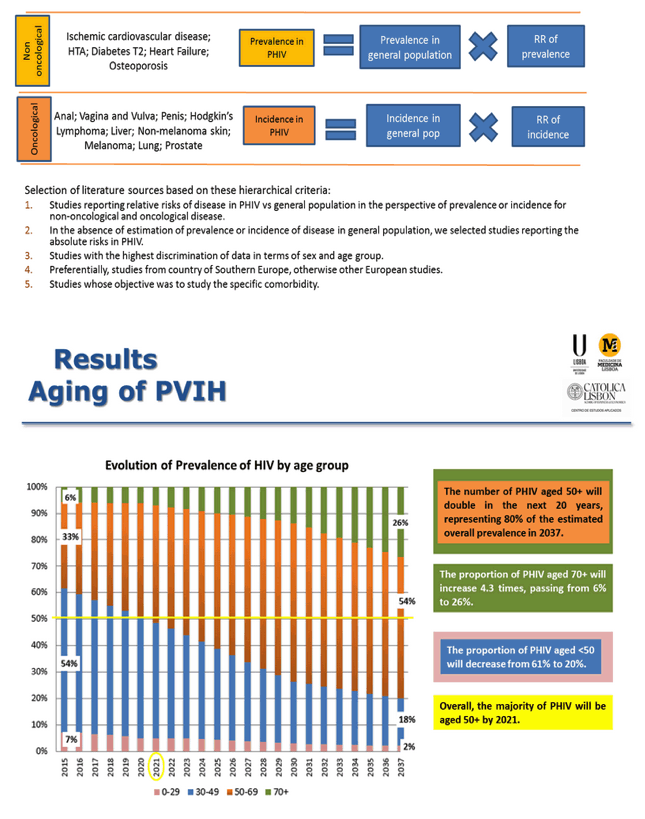

|
| |
|
 |
 |
|
|